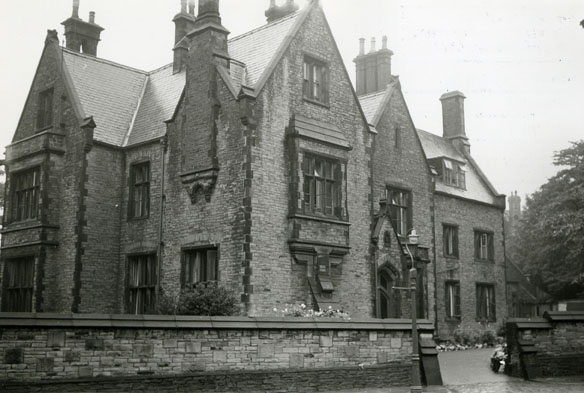St George's, Kersal
St George's, KersalManchester, Lancashire (1928 - c1980) The Home in Kersal can be divided into four stages: St George's Home for Boys (1929-1939); St George's Home for Diabetic Boys (1949-c1952); the Residential Hostel For Diabetic Children (c1952-1975); and finally St George's, a residential care home. In June 1928 the residents of St George's Home in Manchester were moved to Kersal because of the cramped and unsuitable conditions of their original Home. The new St George's Home for Boys was situated in the former Kersal Rectory, and was purchased for £1,500. The Home was opened on 10 October 1928 by the Lord Bishop of Middleton. The chapel and other parts of the Home were blessed and a key presented to Lady Aubrey Fletcher by Isaac Taylor. The residents performed a guard of honour for the occasion which was followed by hymns and speeches. In 1936 the Home spent their Annual Holiday in Fleetwood and the residents returned there three years later when they were evacuated at the beginning of the Second World War. By 1943 the St George's Home residents moved from Fleetwood to another site in Pont-y-Pant, Wales. The building at Kersal reopened in 1949 as St George's Home for Diabetic Boys. This was the second of the Society's Hostels working with diabetic children; the first being St Monica's, Kingsdown, Deal, Kent. The new Home was a direct consequence of the 1949 Henderson Report by the Ministry of Education which stated that of the 1,200 children in England and Wales with diabetes, 150 needed residential care. By 1952 the Kersal Residential Hostel For Diabetic Children took both boys and girls. It had developed a series of structures to make the lives of children with diabetes easier. The hostel was 'bright and airy' and as much like home as possible with 'personal belongings' as well as a fully trained, experienced 'diabetic worker' in the form of 'Mother' or Matron. Each child was taught to inject their own insulin and also regulate their own diet. In 1966 the Home was closed in order to carry out essential maintenance to the property and by 1968 the Home had been completely rebuilt at a cost of £30,500. The Home reopened in 1969 on the same site but with an entirely new and modernised structure. In 1975 the Hostel for Diabetic Children closed and became a Children's Home owing to heavy demand for residential care in the North West. The Home is believed to have closed around 1980. |




